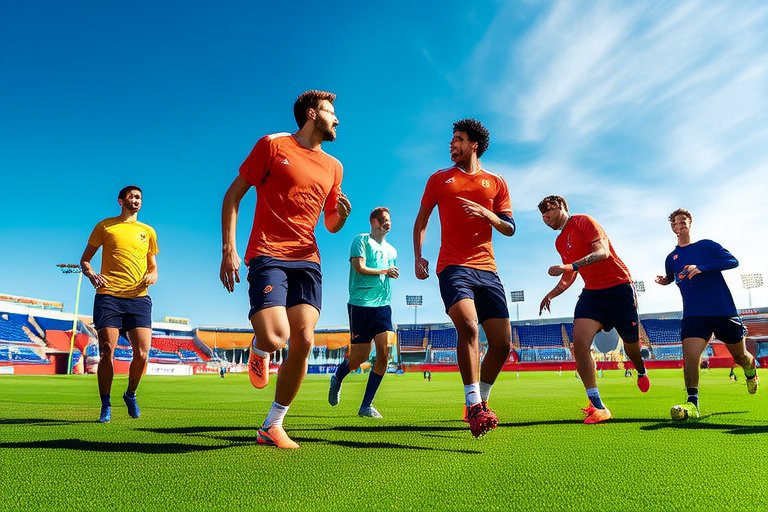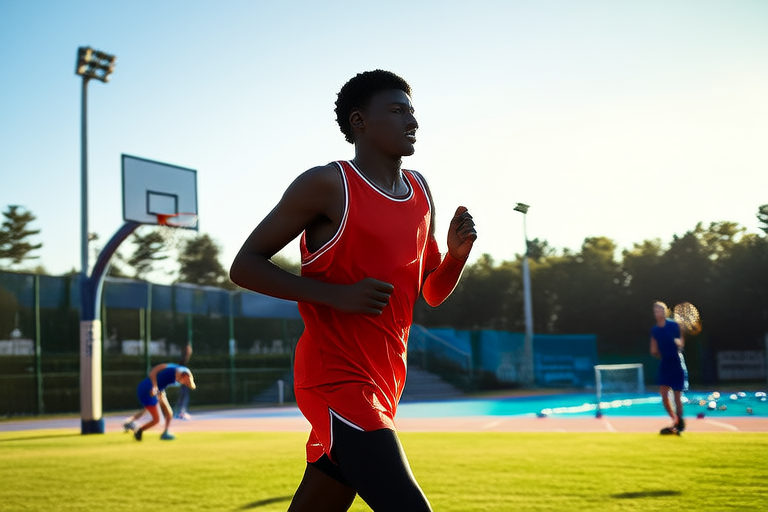Exploring the World of Sports: A Comprehensive Introduction to Different Types
Introduction
Sports have been an integral part of human civilization, serving as a medium for physical fitness, entertainment, and social interaction. From ancient Olympic games to modern-day international competitions, sports transcend cultural and geographical boundaries, uniting people through shared passion and competition. This article delves into the diverse world of sports, exploring four major categories: team sports, individual sports, water sports, and extreme sports. Each section provides insights into the basic rules, essential equipment, and physical benefits associated with these activities, offering readers a comprehensive understanding of their significance in promoting health and fostering global connections.
Team Sports
Team sports are characterized by collaboration, strategy, and camaraderie among players working toward a common goal. These sports require participants to communicate effectively, trust their teammates, and execute coordinated efforts to succeed.
Examples of Team Sports
Popular examples include soccer (football), basketball, volleyball, rugby, and cricket. Each sport has its unique set of rules and objectives, but they all emphasize teamwork and collective achievement.
Basic Rules
In soccer, two teams of 11 players aim to score goals by kicking the ball into the opponent’s net without using their hands. Basketball involves two teams of five players each, who attempt to shoot the ball through the opposing team’s hoop while adhering to specific dribbling and passing rules. Volleyball requires teams to hit the ball over a net and ground it on the opponent’s court within three touches per side. Rugby combines elements of soccer and American football, where players tackle opponents and carry or pass the ball to score points. Cricket is played between two teams of 11 players, focusing on batting, bowling, and fielding to accumulate runs.
Equipment
The equipment varies depending on the sport. Soccer requires a ball, cleats, shin guards, and goalposts. Basketball players use a ball, hoops, and a court. Volleyball needs a net, ball, and designated court markings. Rugby players wear protective gear like mouthguards and jerseys, while cricketers use bats, balls, wickets, and helmets.
Physical Benefits
Team sports enhance cardiovascular endurance, muscular strength, agility, and coordination. They also promote mental well-being by reducing stress, improving focus, and building interpersonal skills such as leadership and communication.
Individual Sports
Individual sports highlight personal skill, discipline, and perseverance. Unlike team sports, these activities rely solely on the athlete’s performance, making them ideal for those seeking self-improvement and independence.
Examples of Individual Sports
Tennis, golf, swimming, gymnastics, and track and field are prominent examples. Each sport demands precision, technique, and dedication.
Basic Rules
In tennis, players hit a ball over a net into the opponent’s court, aiming to score points when the opponent fails to return it. Golf involves hitting a ball into a series of holes on a course in as few strokes as possible. Swimming competitions test speed and endurance across various strokes like freestyle, backstroke, breaststroke, and butterfly. Gymnastics evaluates athletes based on routines performed on apparatuses such as the balance beam, uneven bars, and floor exercise. Track and field encompasses running, jumping, and throwing events, with each event governed by specific regulations.
Equipment
Tennis requires rackets, balls, and a court with a net. Golfers use clubs, balls, tees, and gloves. Swimmers need goggles, swim caps, and appropriate attire. Gymnasts utilize specialized equipment tailored to their routines, while track and field athletes may require spikes, javelins, shot puts, or hurdles.
Physical Benefits
Individual sports improve flexibility, balance, strength, and cardiovascular health. They also cultivate mental resilience, patience, and self-discipline, empowering athletes to overcome challenges independently.
Water Sports
Water sports combine physical exertion with the refreshing allure of aquatic environments. These activities range from competitive disciplines to recreational pursuits, catering to diverse interests and skill levels.
Examples of Water Sports
Swimming, surfing, rowing, kayaking, and diving are popular choices. Each offers unique experiences and opportunities to connect with nature.
Basic Rules
Swimming races involve completing laps in pools or open waters within specified times. Surfing competitions judge participants based on wave selection, maneuvers, and style. Rowing entails propelling boats using oars, either individually or in teams, while adhering to race distances. Kayaking focuses on navigating waterways efficiently, often incorporating slalom courses or long-distance routes. Diving evaluates athletes’ form, execution, and difficulty during acrobatic dives into pools.
Equipment
Swimmers rely on suits, caps, and goggles. Surfers need boards, leashes, and wax. Rowers use shells, oars, and life jackets. Kayakers require kayaks, paddles, and safety gear. Divers depend on platforms, springboards, and sometimes weights for stability.
Physical Benefits
Water sports strengthen muscles, enhance lung capacity, and improve overall body conditioning. The buoyancy of water reduces joint strain, making these activities accessible even to individuals with injuries or mobility issues. Additionally, they foster relaxation and mindfulness by encouraging immersion in natural surroundings.
Extreme Sports
Extreme sports push the boundaries of human capability, combining adrenaline-pumping excitement with technical expertise. These high-risk activities appeal to thrill-seekers and adventurers eager to conquer challenging terrains and scenarios.
Examples of Extreme Sports
Rock climbing, skydiving, snowboarding, bungee jumping, and motocross are iconic examples. Each demands courage, adaptability, and advanced skills.
Basic Rules
Rock climbing involves ascending natural or artificial walls using ropes, harnesses, and anchors. Skydiving requires participants to jump from aircraft at high altitudes and deploy parachutes before landing safely. Snowboarding entails descending snowy slopes on a board while performing tricks or maintaining speed. Bungee jumping consists of leaping from elevated structures attached to elastic cords. Motocross pits riders against rugged off-road tracks filled with jumps, turns, and obstacles.
Equipment
Rock climbers need helmets, harnesses, carabiners, and climbing shoes. Skydivers use parachutes, altimeters, and jumpsuits. Snowboarders rely on boards, bindings, boots, and protective gear. Bungee jumpers depend on secure cords and harnesses. Motocross riders require motorcycles, helmets, goggles, and protective padding.
Physical Benefits
Extreme sports develop core strength, balance, reflexes, and mental toughness. They also encourage risk management, problem-solving, and quick decision-making under pressure. Participants often experience heightened confidence and a sense of accomplishment after conquering fears and achieving milestones.
Conclusion
Sports play a vital role in maintaining physical health, enhancing mental well-being, and fostering social connections. Whether engaging in team sports that build camaraderie, individual sports that promote self-reliance, water sports that blend fitness with tranquility, or extreme sports that challenge limits, there is something for everyone in this vast and dynamic realm. Beyond personal benefits, sports serve as a universal language, bridging cultures and communities worldwide. By embracing sports, individuals not only prioritize their health but also contribute to a more inclusive and harmonious global society. So lace up your sneakers, grab your racket, paddle out into the waves, or take that daring leap—because the world of sports awaits!










